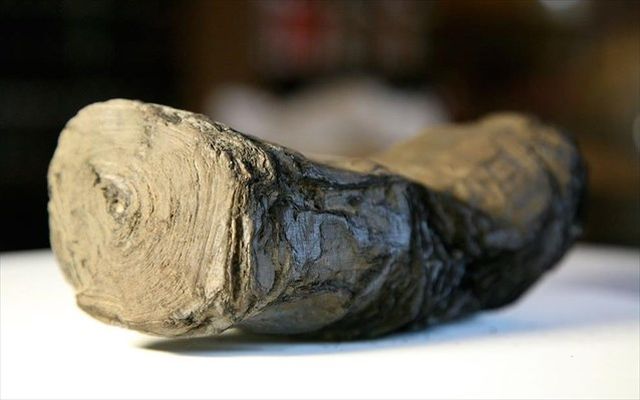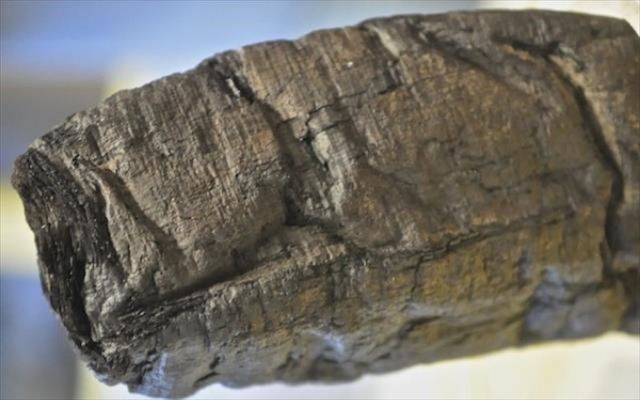Ancient papyruses in Greek, burned in the devastating eruption of Vesuvius in 79 AD and buried in the ashes of the neighbouring Herculaneum, will reveal their secrets for the first time. This has been enabled by a powerful new X-ray technology, with which scientists managed to read the first words on two of the manuscripts.
Italian scientists from the Institute of Microelectronics and Microsystems of the National Research Council (CNR-IMM) in Naples, led by the physicist Vito Mocella and in collaboration with French colleagues, managed to read some of the text inscribed on the semi-destroyed rolled-up scrolls, without unfolding them.
The experts have published an article about their findings in the Nature Communications journal.
These scrolls were found back in 1754, and had been a part of a private library of 600-700 books located in a room of a small house in Herculaneum, the other city destroyed along with Pompeii (which is why some call it ‘the second Pompeii’) by the eruption of Vesuvius.

It is believed that the villa and the library full of Epicurean philosophical writings (practically the only preserved library from the classical era), belonged to a wealthy Roman citizen, probably the father-in-law of Gaius Julius Caesar, named Lucius Calpurnius Piso Caesoninus.
After the volcano erupted, a blast of hot air reaching 320°C charred the scrolls. Their extreme fragility has not allowed researchers to open and attempt to read them (some tried with infrared cameras), because there was so much risk of destroying them. So these manuscripts, reaching perhaps a length of 15 metres, have kept their secrets until today.
Italian scientists have used a new x-ray tomography, which separates the burnt scroll base from the letters inscribed in black ink, thanks to the subtle but palpable difference, with which the two materials – the papyrus and the ink – refract the x-rays. For the purpose, the researchers have used the European Synchrotron Radiation Facility (ESRF) in Grenoble. The letters sit on mere 0.1 mm on top of the papyrus surface, but they can be deciphered no less.

The new technology reveals individual letters of the Greek alphabet, and some whole Greek words in two of the scrolls, one of which the scientists managed to unroll beforehand. The two scrolls were presented to Napoleon Bonaparte in 1802, and today they are owned by the French Institute. It is not puzzling that they were written in Greek, as there was a long Greek presence in this region of Italy.
Comparing the two manuscripts with another preserved scroll from Herculaneum, written by the Epicurean philosopher and poet Philodemus in 1st century BC, the researchers do not exclude the possibility that he is the author of one of the burnt scrolls.
The scientists have not succeeded in deciphering the full content of the scrolls yet they believe they will be in the future if they use a more powerful x-ray machine.
The team leader Vito Mocella now talks about a ‘revolution in the science of papyruses’, and hopes that the new technology will clear the road towards reading the multitude of so far illegible ancient texts.